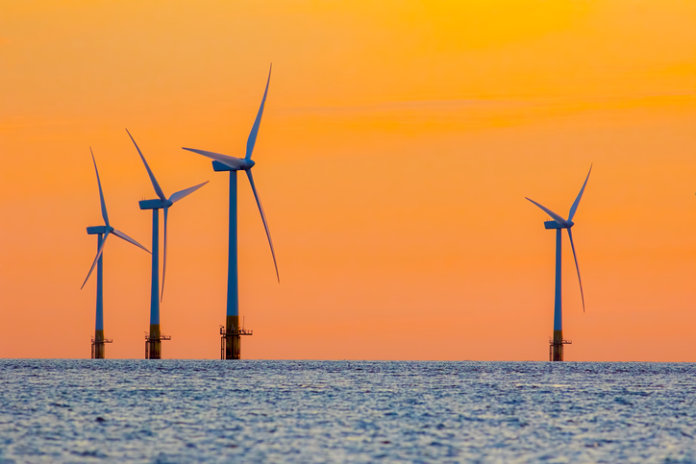On Thursday, the New Jersey Board of Public Utilities (NJBPU) convened business stakeholders to advance the state’s offshore wind strategy with an in-state supply chain.
As a major component of Gov. Phil Murphy’s clean energy initiative, offshore wind will help New Jersey reach 100% clean energy by 2050, explains the NJBPU.
The Offshore Wind Supply Chain Networking Event, which took place at Princeton University’s Andlinger Center for Energy and Environment, provided information about the state’s plans for offshore wind, supply chain opportunities, available incentives and workforce development programs. The event was co-sponsored by the New Jersey Economic Development Authority, Department of Environmental Protection and Department of Labor and Workforce Development, as well as several offshore wind-related businesses.
Emphasizing the economic and environmental benefits of offshore wind, New Jersey opened a solicitation in September for 1,100 MW of offshore wind. The governor has also called on the NJBPU to open additional solicitations for 1,200 MW in 2020 and 2022.
“The networking and collaboration facilitated here is hugely important as we move forward to implement the governor’s offshore wind vision, which includes building the supply chain and creating job opportunities,” said Joseph L. Fiordaliso, president of the NJBPU.
“In addition to the obvious clean energy benefits as we attempt to combat the impacts of climate change, the scale of the solicitation is designed to attract the offshore wind supply chain to New Jersey and to create new jobs and economic activity, all while reducing greenhouse emissions,” he continued.
Tim Sullivan, CEO of the New Jersey Economic Development Authority, provided morning remarks focusing on how the offshore wind solicitation will generate local economic opportunity.
“Offshore wind presents a once-in-a-generation opportunity for new industry development in the state,” said Sullivan. “The NJEDA and its partners across state government are prepared to help position businesses of all sizes to take advantage of this opportunity.”
The New Jersey Department of Environmental Protection, in addition to co-sponsoring the event, remains fully engaged in supporting Murphy’s goal of 3,500 MW of offshore wind by 2030 and transforming New Jersey into a 100% clean energy state by 2050.
“Wind provides an abundant, clean source of energy that will help New Jersey address climate change caused by the emissions of greenhouse gases from fossil fuel power plants,” said the DEP’s commissioner, Catherine R. McCabe. “We are committed to providing all the necessary tools and incentives to aggressively develop this sector and position New Jersey as a leader in wind energy.”
Afternoon moderated panels with offshore wind developers and New Jersey state agencies discussed port redevelopment, offshore wind job creation onshore and the best use of state resources. Hugh Bailey, assistant commissioner of the New Jersey Department of Labor and Workforce Development, noted the customized training and apprenticeship programs available in high-demand industries like clean energy.
“Economic development and workforce development are two sides of the same coin,” Bailey said. “Establishing a stronger, fairer economy means employers having access to a pool of workers with the training, skills and credentials needed to get the job done.”
The day also featured afternoon networking, during which offshore wind developers, turbine manufacturers, major industry suppliers and contractors met with local New Jersey suppliers to connect and begin building the offshore wind supply chain.





I am a retired Aerospace Engineer. I am working on some innovative wind turbine design, such as axial flow helical bladed rotors. The reason is , the rotor of the conventional radial bladed rotor becomes too massive, once we reach 12 MW of power rating.
To minimize the weight of the rotor, we are looking into a different rotor configuration , Axial Flow Helical Bladed Rotor (US 9,537,371 B2 (Jan 3, 2017).
This seems to yield light weighted rotor and significantly higher power vs the conventional radial bladed rotor.